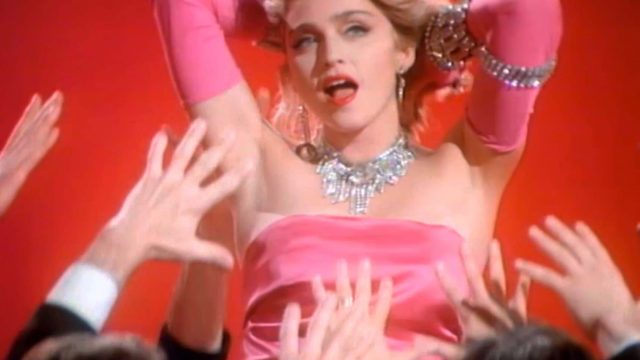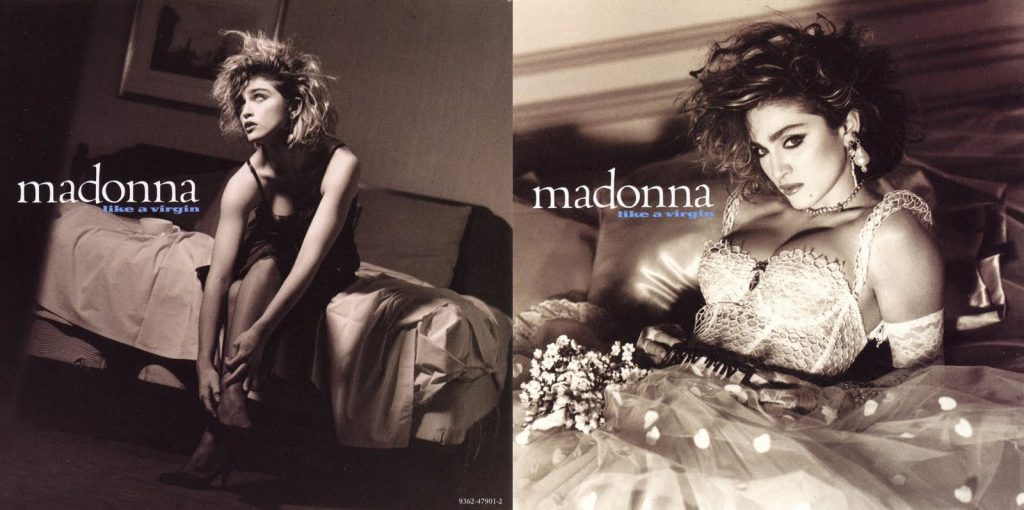My older sister got the Like a Virgin album as a birthday gift. I believe she was either eight or nine, which would make me four or five. My Portuguese-speaking family had no idea what Madonna was singing, so the risqué title meant nothing to us. (I remember asking my mother what “Material Girl” meant, but not “Like a Virgin”). And I guess the album cover didn’t bother them either… But it had an impact on little me. Especially the contrast with the back photo.
On the back cover, Madonna’s hair is a mess. Her jewelry is gone. There’s a coffee cup on the bed, ready to be spilled. Even if I had no idea of the connotation of both photos at the time, it was clear that something had happened to her. Something important. And something important did happen with the release of Madonna’s second album: it was the true start of Madonna as the ultimate pop provocateur. And the start of Madonna in my life.
(Of course later I discovered Madonna’s first album — which is even better than Like a Virgin, in my opinion.)
It was obvious an album with a name like that would cause controversy. And the singer knew the title track would be a hit — she had to convince producer Nile Rodgers of that. She was right on both fronts: the song became her first number-one hit on the Billboard Charts, and the album became the first by a female artist to sell five million copies. But in my opinion, it’s the other megahit from Like a Virgin that really cemented Madonna’s power: “Material Girl” is probably the quintessential ’80s song, with its celebration of all the things money can buy and the Marilyn Monroe-inspired video, the first of many references to Hollywood glamor Madonna would invoke throughout her career. (Always keen to leave people guessing,Madonna may sing about loving money, but in the video, she chooses the guy who gives her flowers instead of diamonds.)
The singer wanted to produce the album herself, but her record label was against it. They reached a deal with Nile Rodgers, and his production enriches the songs with his post-disco touches — like the groovy guitar at the end of the lovely “Angel.” The songs are never overblown; the moments of catharsis come from Madonna’s own efforts, like in the bridge of “Over and Over” or the way her voice breaks at the end of the heartfelt “Love Don’t Live Here Anymore” (Exhibit A that Madonna would become a fantastic singer of ballads).
The inclusion of ballads is one factor that shows Madonna trying out a wider range than on her debut (an eight-bangers-and-that’s-it album). Not everything works, and the non-inclusion of “Into the Groove” still feels like a crime, more than 35 years later. But if something like “Stay” is nice but forgettable, there’s also “Dress You Up,” one of Madonna’s most enjoyable singles of the decade. But Like a Virgin was still very much the beginning of Madonna. It would take her until album number four (Like a Prayer) to finally convince the critics of her talents. Poor critics, they arrived so late to the party!



